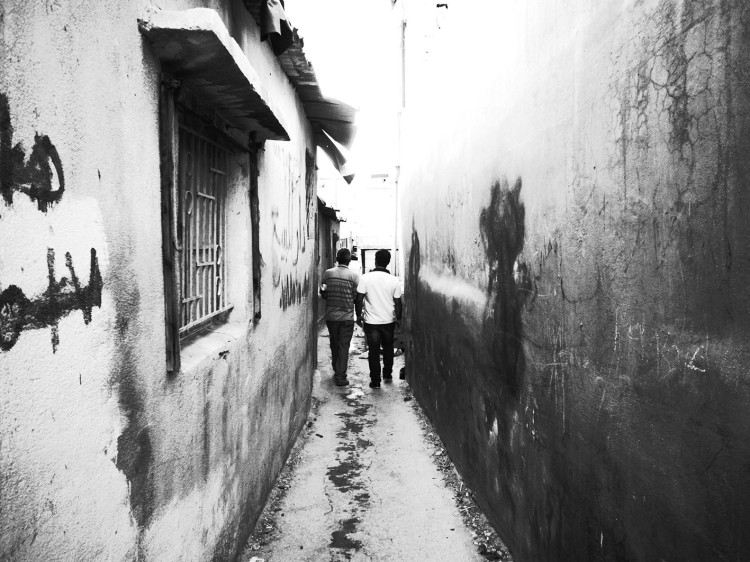Photo Gallery: Baqa’a Camp, Jordan
By Samar Maqusi, University College London
Baqa’a camp in Jordan is one of six emergency camps established in 1968 to shelter Palestinian refugees fleeing the 1967 Arab-Israeli war; when first established, it sheltered around 18,000 refugees, on an area of 1.4 km2; this makes it the largest camp in Jordan. Today, Baqa’a camp houses over 119,000 refugees according to UNRWA figures (unrwa.org), although local estimates from refugees double that figure. Baqa’a camp is located in close proximity to Amman city towards the north, and sits along the South-North Highway which connects Amman to the northern cities of Jordan.
The Palestinian refugees living in Baqa’a camp are overwhelmingly “second-time” refugees who came to Jordan from the refugee camps that had been established in Jericho in 1948 to house refugees fleeing the 1948 Arab-Israeli war. The fact that these refugees underwent two processes of forced displacement meant that they were very well aware of the increasingly protracted nature of their situation, and thus quickly opted to develop and build-up the camp, and develop economic means – mostly utilizing informal sectors – to secure economic protection for their families.
Like many other refugee camps in Jordan and Lebanon, Baqa’a experienced an influx of Syrian refugees seeking shelter and work inside the camp, as well as some Palestinian refugees from Syria, although the number of Palestinian refugees from Syria in Jordan remains smaller than those in Lebanon. This is due to the Jordanian government’s strict policies towards Palestinian refugees trying to enter Jordan from the Syrian borders: the Jordanian government imposed a “non-entry” policy towards Palestinian refugees from Syria in early-2013, leaving many refugees stranded on the borders or living in precarious and unsafe conditions inside the Palestinian camps of Syria.
Today, there are more than 17,000 Palestinian refugees from Syria in Jordan, mostly residing inside the established Palestinian camps there; while they receive some assistance from UNRWA, they suffer as a result of a lack of recognition by the Jordanian government. There are around 1.3 million Syrian refugees in Jordan, of whom 657,422 are officially registered (UNHCR Syria Regional Refugee Response, 2016). Unregistered refugees seek refuge in urban areas, or as most preferred, in the established Palestinian refugee camps as these tend to offer better opportunities for affordable rent and informal work.
Similar to other refugee camps, the influx into Baqa’a camp of both Palestinian refugees from Syria, and Syrian refugees has directly affected the spatial conditions of the camp, along with social and economic formations. Established Palestinian refugees ‘hosting’ new arrivals opted to quickly build-up their spaces within their means to be able to rent them to refugees fleeing from Syria, thus establishing a strong rental and economic market inside the camp. This of course means that the existing infrastructural capacity of the camp, which is limited and in urgent need of repair and often replacement, is now being shared and further eroded, which in turn, causes socio-economic strains inside the camp and its community. The following images – taken between 2014 and 2016 – present a spatial-overview of the existing conditions inside Baqa’a camp.
Text and images © Samar Maqusi.










7 comments